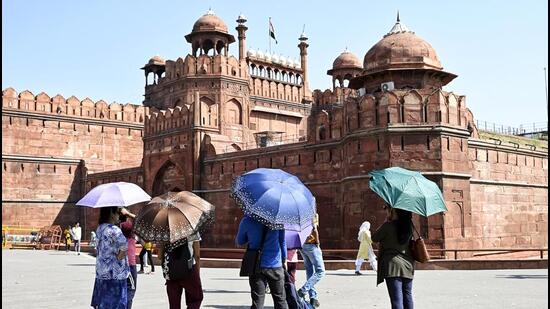Weather Bee: Usual March weather for India on average, but not for individual places
India’s average maximum temperature for the month (up to March 20) is 30.91°C, according to the gridded data of the IMD.
There is no official spring season in India, but March can be considered as one because it is the month of the spring equinox in the northern hemisphere, and also the first month after India’s official winter season, which runs from December to February.

However, March has only occasionally seen the pleasant weather associated with spring in recent years. This is because either cool winter weather extends into March or there is a quick plunge into hot weather; sometimes a combination of the two affects different parts of the month. This year, March has so far behaved in a similar way, an HT analysis shows.
To be sure, on average, March appears almost benign till now. India’s average maximum temperature for the month (up to March 20) is 30.91°C, according to the gridded data of the India Meteorological Department (IMD); it is the 37th warmest or 39th coolest since 1951, the first year for which IMD has published gridded data.
The rank of the average maximum does not suggest extreme weather. This can also be seen in the deviation from normal, which IMD considers as the average temperature for the 1981-2010 period. The average deviation of the maximum from normal is just 0.16°C. Even the average minimum temperature does not suggest extreme weather. India’s average minimum for the month so far is 16.7°C, the 27th warmest since 1951 and 0.38°C warmer than normal.
How is the weather this month extreme then? One way to answer this question is to look at the deviation in India’s daily temperature. While the average for the month is close to normal, there were several days on which the deviation was big. Maximum temperature deviated by at least 0.50°C on eight days and by at least 1°C on four. Similarly, minimum temperature deviated by at least 0.50°C on 17 days and by at least 1°C on 11 days. The reason why the average for the month appears close to normal despite big deviations on individual days is that some big deviations were above normal and some below, cancelling each other out in the monthly average.
Another way for checking extreme weather is by looking at the temperature of individual places instead of the average for India. The accompanying maps, for example, look at the maximum temperature for all places for three different parts of the month. These show that a large part of northeastern states, parts of Tamil Nadu, and almost all of Jammu and Kashmir and Ladakh have been unusually cool throughout this month. Similarly, large parts of Gujarat and Maharashtra have been unusually warm almost throughout the month. On the other hand, a majority of the rest of India has swung between cool and warm extremes. It is this part of the country that has likely swung India’s average daily maximum from one extreme to the other through the month.



What explains these trends? In northern and north-western India, the trends were driven by western disturbances, a loosely defined term for storms originating west of India, usually in the Mediterranean region. These storms brought snowfall in India’s hilly states and some rain in north-western India during the parts of the month these states were cool. When atmosphere conditions were favourable, the cooling effect of these storms in the plains persisted beyond rainfall, as cool winds blew from snow-covered mountains towards the plains. When these winds stopped, temperatures rose.
To be sure, western disturbances were not responsible for the temperature trends in peninsular and north-eastern India. However, it is indeed rain – brought by cyclone-like circulations in the Bay of Bengal – that has kept these regions cool for most of the month.
All Access.
One Subscription.
Get 360° coverage—from daily headlines
to 100 year archives.



HT App & Website







